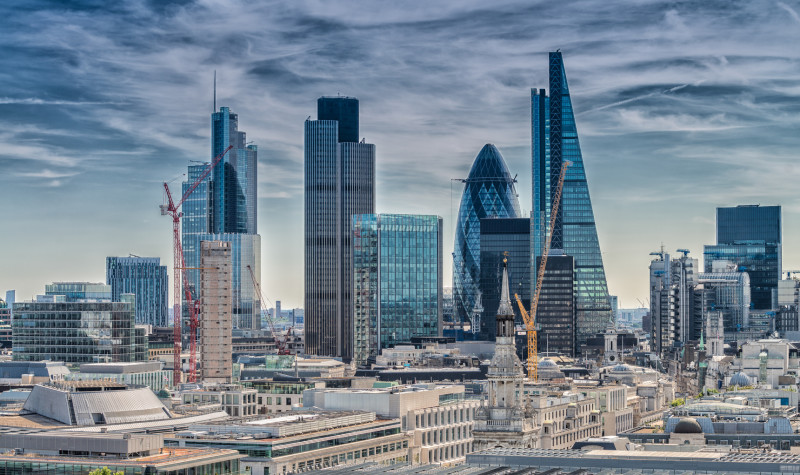How we achieved 52 years of dividend growth

City of London Investment Trust manager Job Curtis explains how he uses revenue reserves to smooth dividend payments over time.
There is no question that we find ourselves in uncertain times. It is during periods of uncertainty that the investment trust structure has distinct merits. That’s because investment trusts, which are listed companies in their own right, can store future income away for a rainy day – a unique function of investment trusts called revenue reserves.
Revenue reserves are the means by which investment trusts can continue to grow their dividends even when dividends across the stock market are falling, typically during economic downturns. Investment trusts do not have to distribute all of their income in each financial year. They are allowed to hold back up to 15% of their annual income. For example, in a good year for investment income, an investment trust might hold back 5% of its income, while distributing the other 95% in dividends to its shareholders. The 5% that is held back will be added to the revenue reserve. Over the years, the revenue reserve can build up to a substantial sum if the investment trust is able to make further retentions.
In contrast, during an economic recession, there will be dividend cuts. If during these times an investment trust’s income from its portfolio declines, it is still possible to grow its dividend by drawing down from the revenue reserve. Obviously, revenue reserves are finite and so using the revenue reserves to sustain dividend growth can only take place for a limited number of years. The revenue reserve of an investment trust is revealed each year in its annual report and accounts. The largest revenue reserves tend to be found in old investment trusts which have accumulated them over many years.
City of London’s use of revenue reserves
I have now managed City of London Investment Trust for more than 27 years and we have grown our dividend in each of those years. We have had to use revenue reserves in seven different years to increase the dividend. Our financial year ends on 30th June and I can well remember how difficult it was for world equity markets over the twelve months to 30th June 2002. During those 12 months, City of London’s earnings per share (including all its investment income) fell by 11.0% to 7.48p and yet we were still able to increase the dividend per share by 5.9% to 7.94p. The difference between 7.94p and 7.48p, or 0.46p, was paid from the revenue reserve.
The following year (to 30th June 2003), earnings per share recovered by 5.2% to 7.87p but it was still not enough to cover the dividend per share, which we increased by 1.6% to 8.07p using the revenue reserve. The next year (to 30th June 2004,) earnings per share grew by 4.7% to 8.24p but again failed to cover the dividend per share, which grew by 3.2% to 8.33p. It was after three years of using revenue reserves, in the 12 months to 30th June 2005, that the dividend per share of 8.62p (up by 3.5%) was covered by earnings per share of 8.88p (up by 7.8%) and revenue reserves were once again added to.
In City of London’s portfolio, I aim to be invested in companies that can consistently grow their profits and dividends through the cycle. However, during economic downturns, there are bound to be companies that disappoint. Open Ended Investment Companies (OEICs) have to distribute 100% of their income each year and are not permitted to have a revenue reserve. I would have not been able to achieve 27 years of annual dividend increases if I had been managing an OEIC.
City of London’s annual dividend stood at 4.56p in 1991, the year when I was appointed its Fund Manager. The quarterly dividend is now 4.75p and the investment trust’s Board of Directors has announced that it intends to pay an annual dividend of 18.60p for the year to 30th June 2019.
The past performance of an investment is not a reliable guide to its future performance. For UK investors only. For promotional purposes. The value of investments, and the income from them, can go down as well as up, and you may not get back the amount you invested. Nothing in this communication is intended to be or should be construed as advice. Before investing in any investment referred to in this communication, you should satisfy yourself as to its suitability and the risks involved. Nothing in this communication is a recommendation or solicitation to buy, hold or sell any investment. Tax assumptions and reliefs depend upon an investor’s particular circumstances and may change if those circumstances or the law change. Issued in the UK by Janus Henderson Investors. Janus Henderson Investors is the name under which investment products and services are provided by Janus Capital International Limited (reg no. 3594615), Henderson Global Investors Limited (reg. no. 906355), Henderson Investment Funds Limited (reg. no. 2678531), AlphaGen Capital Limited (reg. no. 962757), Henderson Equity Partners Limited (reg. no.2606646), (each registered in England and Wales at 201 Bishopsgate, London EC2M 3AE and regulated by the Financial Conduct Authority) and Henderson Management S.A. (reg no. B22848 at 2 Rue de Bitbourg, L-1273, Luxembourg and regulated by the Commission de Surveillance du Secteur Financier). Janus Henderson, Janus, Henderson and Knowledge. Shared are trademarks of Janus Henderson Group plc or one of its subsidiaries. © Janus Henderson Group plc.
Comments (0)